AMD Ryzen 5 3600 Review: Why Is This Amazon's Best Selling CPU?
by Dr. Ian Cutress on May 18, 2020 9:00 AM ESTTurbo, Power, and Latency
Turbo
As part of our usual test suite, we run a set of code designed to measure the time taken for the processor to ramp up in frequency. Recently both AMD and Intel are promoting features new to their processors about how quickly they can go from an active idle state into a turbo state – where previously we were talking about significant fractions of a second, we are now down to milliseconds or individual frames. Managing how quickly the processor fires up to a turbo frequency is also down to the silicon design, with sufficient frequency domains needing to be initialized up without causing any localised voltage or power issues. Part of this is also down to the OEM implantation of how the system responds to requests for high performance.
Our Ryzen 5 3600 jumped up from a 2.2 GHz high-performance idle all the way to 4.2 GHz in 16 milliseconds, which coincides exactly with a single frame on a 60 Hz display. This is right about where machines need to be in order to remain effective for a good user experience, assuming the rest of the system is up to scratch.
Power
With the Ryzen 5 3600, AMD lists the official TDP of the processor as 65 W. AMD also runs a feature called Package Power Tracking, or PPT, which allows the processor to turbo where possible to a new power value – for 65 W processors that new value is 88 W. This takes into account the power delivery capabilities of the motherboard, as well as the thermal environment. The processor can then manage exactly what frequency to give to the system in 25 MHz increments.
As part of my new test suite, we have a CPU power wrapper across several benchmarks to see the power response for a variety of different workloads.
For an AVX workload, y-Cruncher is somewhat periodic in its power use due to the way the calculation runs, but we see an almost constant 90 W peak power consumption through the whole test. The all-core turbo frequency here was in the 3875-3925 MHz range.
Our 3DPMavx test implements the highest version of AVX it can, for a series of six 10 second on, 10 second off tests, which then repeats. In this case we don’t see the processor going above 75 W in the whole process.
Photoscan is our more ‘regular’ test here, comprising of four stages each changing between single thread, multithread, and variable thread. We see peaks here up to 80 W, but the big variable threaded scenario bounces more around the 60 W mark for over 1000 seconds.
On the per-core power side, using our ray tracing power load, we see a small range of peak power values
When one thread is active, it sits at 12.8 W, but as we ramp up the cores, we get to 11.2 W per core. The non-core part of the processor, such as the IO chip, the DRAM channels and the PCIe lanes, even at idle still consume around 12-18 W in the system.
Latency
Our latency test is a simple core-to-core ping test, to detect any irregularities in the core design.
The results here are as expected.
- 7.5 nanoseconds for threads within a core
- 34 nanoseconds for cores within a CCX
- 87-91 nanoseconds between cores in different CCXes


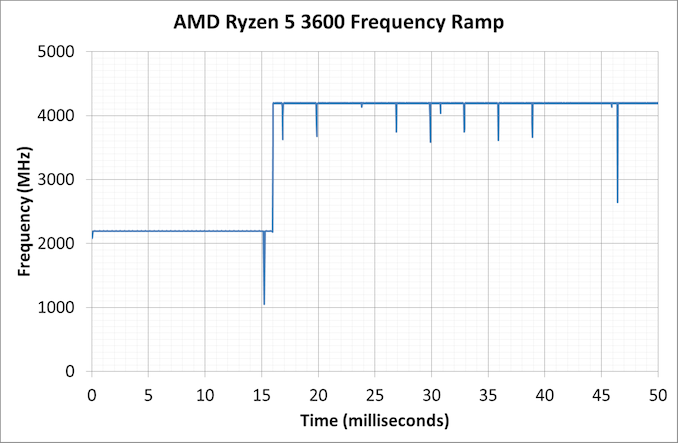
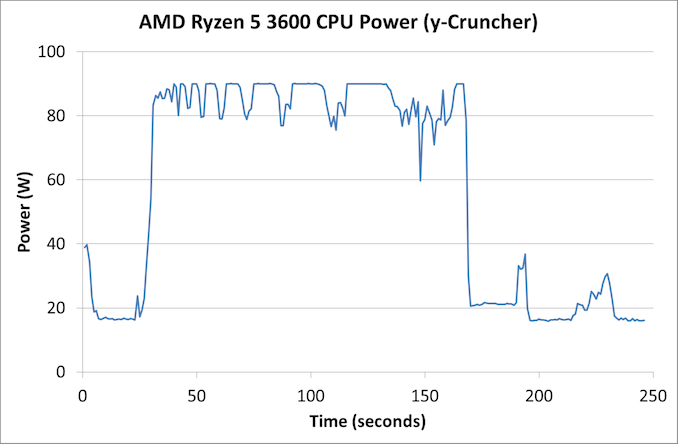
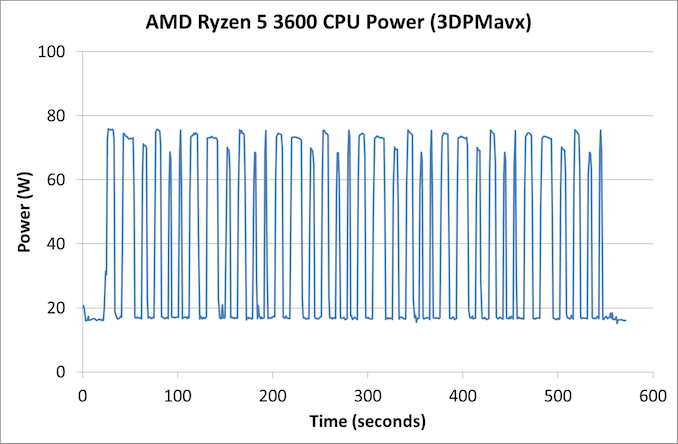
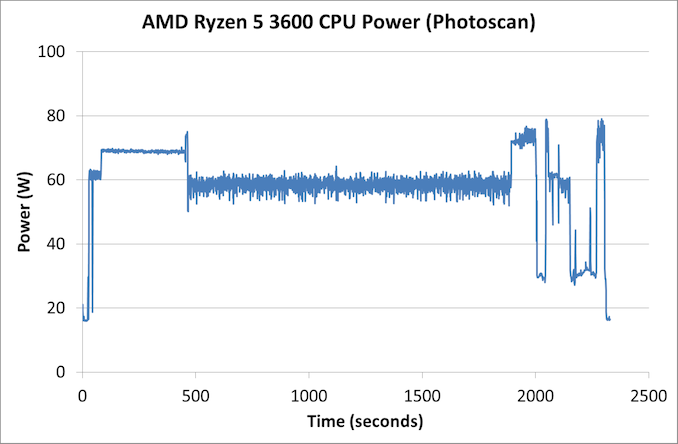
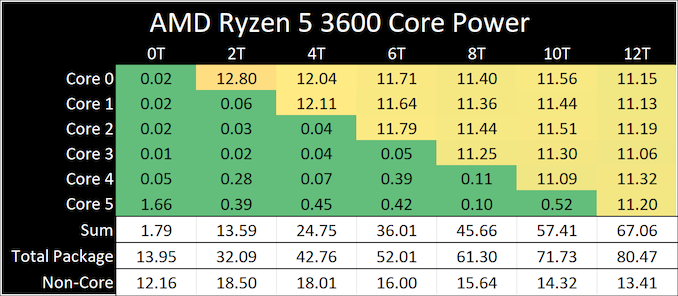
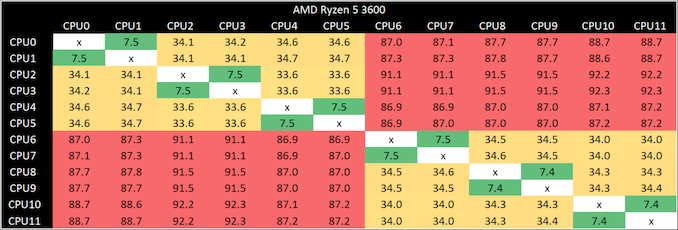








114 Comments
View All Comments
Meteor2 - Wednesday, May 20, 2020 - link
What a great site, thank you for posting it!tommythorn - Monday, May 18, 2020 - link
Typo: ">>Unfortuantely<< AMD has stated ...""once in a while, a truly great CPU" The 300 (but really, 450) MHz Celeron C300 II was such a processor. It was a kludge (desperate to compete with AMD, Intel rushed out a chip that was essentially a P-II but much cheaper). It ended up being an amazing value and with a few hacks even become the introduction to SMP for many.
catavalon21 - Monday, May 18, 2020 - link
I remember it well. Crazy to get a 50% overclock, but almost everyone's 300A would hit, and keep, 450.MDD1963 - Monday, May 18, 2020 - link
The famous Celeron 300A@464 MHz for $79 was quite popular, and, gamed as well as the $450 PII-450...Spunjji - Tuesday, May 19, 2020 - link
Funny how Intel's best price/performance moments tend to be knee-jerk responses to AMD :DToTTenTranz - Monday, May 18, 2020 - link
Does the USB-C Hub support AVX2?1_rick - Monday, May 18, 2020 - link
I'm not sure. Do the chickens have large talons?mikato - Sunday, May 24, 2020 - link
Really, is that the only USB hub on sale in Australia to rank that high?yeeeeman - Monday, May 18, 2020 - link
Cheap price and good performance. That is why.Flunk - Monday, May 18, 2020 - link
$200 is the prime price for people building a fairly powerful computer, but with a budget. 3600 pairs well with pretty much any video card for gaming and is pretty powerful for anything else. Intel competition at this price point is weak, at least until Apollo Lake. 3600 is a obvious recommendation.